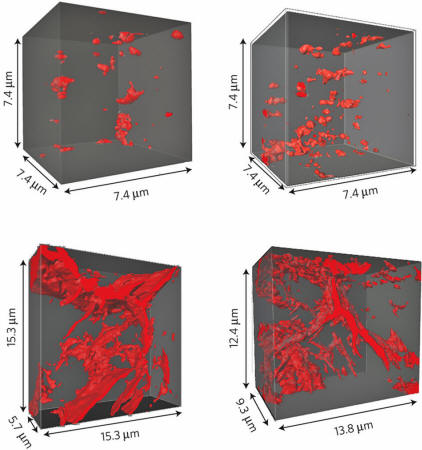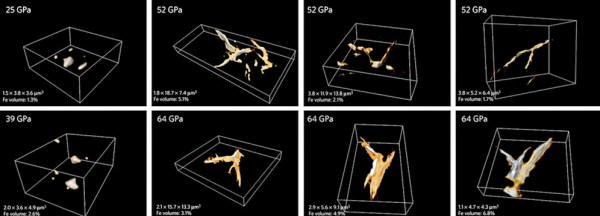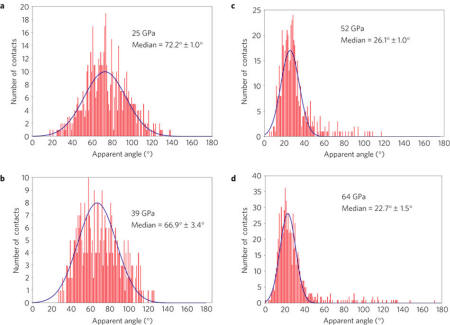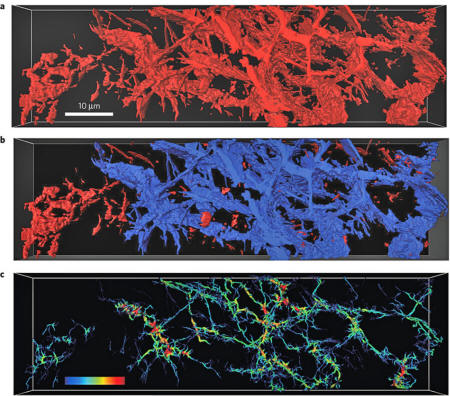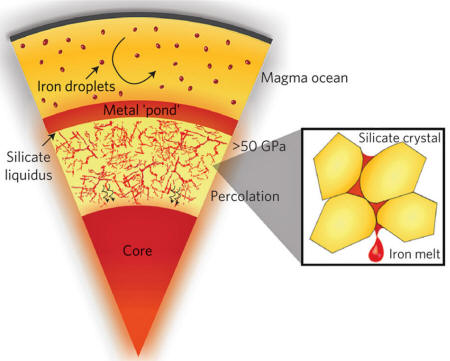|
from FrenchTribune Website
But, the conditions have allowed them
discover just a bit addition regarding the core of Earth. In fact,
the findings are being suspected to make theories of formation of
the planet complex.
There was no base as yet to prove either case.
An Interconnected Network of Iron Melt
...at
Earth’s Lower Mantle Conditions
from
Nature Website
Core formation represents the most significant differentiation event in Earth’s history.
Our planet’s present layered structure with a metallic core and an overlying mantle implies that there must be a mechanism to separate iron alloy from silicates in the initially accreted material. 1, 2
At upper mantle conditions, percolation has been ruled out as an efficient mechanism because of the tendency of molten iron to form isolated pockets at these pressures and temperatures. 3, 4, 5, 6
Here we present experimental evidence of a liquid iron alloy forming an interconnected melt network within a silicate perovskite matrix under pressure and temperature conditions of the Earth’s lower mantle.
Using nanoscale synchrotron X-ray computed tomography, we image a marked transition in the shape of the iron-rich melt in three-dimensional reconstructions of samples prepared at varying pressures and temperatures using a laser-heated diamond-anvil cell.
We find that, as the pressure increases
from 25 to 64 GPa, the iron distribution changes from isolated
pockets to an interconnected network. Our results indicate that
percolation could be a viable mechanism of core formation at Earth’s
lower mantle conditions.
At a glance
3D distribution of iron alloy
melt in silicate perovskite.
The dimensions of each selected
volume of interest are labelled. Regions of interest in the Fe-melt/silicate sample
prepared under different
pressure–temperature conditions.
Distribution of apparent
dihedral angles for contacts between iron alloy melt and silicate
perovskite.
We report the median value of
dihedral angles and the estimated errors based on the 95% confidence
interval.
3D renderings of the
tomographic reconstruction of the iron alloy melt prepared at 64 GPa. the channels labeled in blue in b are contiguous as determined by using a 3D flood-fill algorithm. c, The channel line set extracted from the reconstructed 3D volume;
the color map represents the
relative thickness of the channel, with warmer colors indicating
thicker channels.
Schematic diagram showing
possible Earth core formation mechanisms.
over different
pressure-temperature ranges during Earth’s core formation.
References
|

